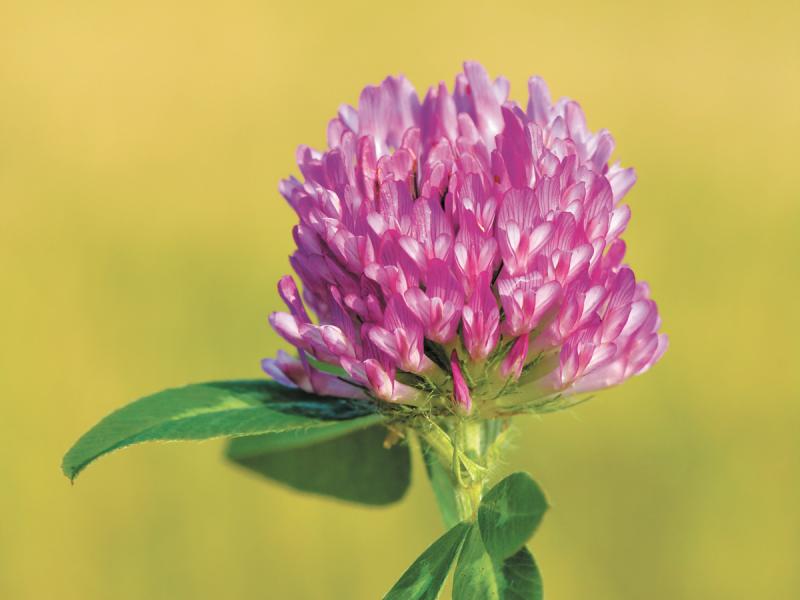From the privacy of their homes, listeners have been playing along ever since the Minneapolis Phonograph Society snickered that many members were “shadow conducting.” Later this would be mimicked when generations began playing imaginary “air guitars.”
In the play “Othello,” the clown says “Go; vanish into air,” and so thanks to Shakespeare we see magic as something out of thin air. Magic in the garden is a plant usually grown for livestock feed but increasingly grown for tea. The plant roots support bacteria that gather or fix nitrogen right out of thin air. In this way, Red Clover (Trifolium pratense) magically fertilizes the soil. It is also grown strictly to benefit the soil. Red clover has deep tap roots that not only loosen the soil, but bring nutrients to the surface.
The magic doesn't stop there. Red clover can be made into a tincture or tea. Tinctures are more concentrated than teas; 30 drops of tincture are the equivalent of one cup of tea. Also, because tinctures are extracted with alcohol, they usually contain a wider range of compounds than teas.
The clover tea is considered one of the best sources of isoflavones, water-soluble chemicals that act like estrogens or phytoestrogens. They can be used to treat hot flashes and PMS, support breast health, lower cholesterol, improve blood circulation, prevent osteoporosis, and even lower the possibility of blood clots. None of these benefits have been clinically proven, so always consult a medical professional before taking herbs.
Red clover is an important forage legume, and also one of the very best plants for smothering unwanted weeds. The flowers are attractive enough to use in mixed bouquets. It is usually considered a short-lived perennial that typically lasts three to five years, but because it self-seeds readily, it often comes back year after year and is considered perennial in USDA zones 3-8.
Broadcast red clover seed on newly tilled ground anytime from spring through fall. Soil pH of 6.2-6.5 is ideal. Sow the seeds at a rate of a half-pound per 1,000 square feet or eight to 16 pounds for each acre.
The best planting depth is about one-quarter inch, though it is best to plant the seeds a bit too shallow rather than too deep. The seeds need to make good contact with the soil to sprout and get established. You can roll over the newly planted seedbed with a garden roller or gently tamp the soil down by pressing a board over the the seedbed. Water using a gentle mist for the first few weeks so the seeds do not get washed away. If you are mixing red clover seeds with grass seeds for a lawn, avoid adding fertilizer high in nitrogen, because the nitrogen stimulates the grass, which then grows faster and crowds out the slower-growing red clover seedlings.
Sow red clover from March through September. Your crop should come back for two or three years at least, maybe even longer.
The neighbors may think you are putting on airs, but take time to sniff a bouquet of clover or sip some red clover tea. Then crank up the Van Halen and play your air guitar.





















































